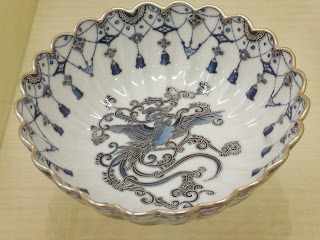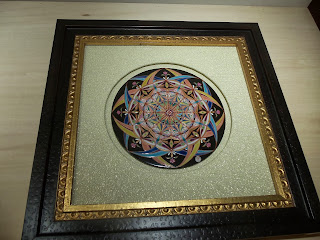WARNING! This post is heavily packed with pictures and thus may take a while to load. Apologies for any inconvenience.
Taking the opportunity which was a day off (due to
Sports Day, so happy for such national holidays), I finally went to Kenrokuen (兼六園), a very
well-known park in Kanazawa. I was hoping to see the famous tying up the
branches of karasakinomatsu pines, which you can see, for example, on the video
linked at the bottom of right-hand menu here, but unfortunately it was still
too early for that. But I’ll return there to see it myself, there’s time for
everything.
Since nothing blossoms at this time of year and autumn
hasn’t changed the colour of the leaves, the park was mainly green, I am still
enchanted by it though. Originally the park was an outer garden of the castle
(one is separated from the other only by a brigge going over a street, and I
guess back then it could’ve been a moat) and for good couple of hundreds of
years it’s been going over various changes: once it was burned down in a fire
and had to be restored, sometimes the lords were adding stuff to it (Takezawa Villa,
Tatsumi Water System), but said stuff then had various things happen to it (the
water system remained, but the villa was destroyed because another lord wanted
a pond in its place), until finally in 1874 the garden was opened to the public
and became a park.
I’ll stop the history talk here, time for pictures. I
am sorry for the quality of the last few, just as I was finishing my trip round
battery in my camera died (and I have a chargeable camera, so I can’t just buy
new batteries and stick them in), so I took them with my mobile camera.
 |
| You can tell that Kenrokuen isn't the youngest of parks, can't you? |
 |
| Part of the aforementioned water system. |
 |
| I was absolutely enchanted by the tree support pillar-things! |
 |
| A pagoda built as a tribute to one of Kyoto's castles. |
 |
| Statue of prince Yamato Takeru. |
 |
| The only flower in bloom I found. |
 |
| The plum grove. |
 |
| The plum grove. |
 |
| One of the many tea houses (the ones where you may encounter a geisha, not the ones where you can drink tea). |
 |
| Hisakigoike Pond |
 |
| Hisakigoike Pond and Kaisekito Pagoda. |
 |
| Yugaotei, the oldest building on Kenrokuen's grounds. |
At the very end of this trip I decided to try ice
cream which was covered with… gold leaf! Kanazawa is renowned for its gold leaf
art and craft (Kanazawa literally means “gold marshes” – not the most
attractive, I agree, but at least its adequate) and every shop has some gold
leaf souvenirs or even small jars/boxes with loose gold leaf.
I’ll be honest, I expected something completely
different. Sure enough, I had plenty of gold leaf on my ice cream, but it’s
either completely tasteless, or has such a subtle flavour that it was drowned
by the vanilla ice cream flavour. Adding the price to that equation (Y500, the
most expensive one from all the ice cream on offer), it wasn’t really worth it
for the culinary experience, but in order to be able to say that one has eaten
gold – priceless!
 |
| Who will forbid a poor student to live lavishly? |
Now let’s go back in time a little, as I visited the Ishikawa
Prefectural Museum of Traditional Arts and Crafts about half-way through my
trip round the park (the museum is on the park’s grounds, though there is an
outside entrance). I definitely wasn’t planning on going there, not today, I
was thinking of going some other time, but once I got to the entrance I thought
that I’m not in a hurry, and that even though Kenrokuen is big it’d be weird to
see just one thing that day. So I entered. And I left in awe.
Special Exhibition
Next to each exposition was a short profile of its kreator
and a big board with paper where you could leave comments. I assume that they
then go straight to the creators of this amazing pottery, or at least I hope so
– all the compliments and all the praise there was definitely earned.
 |
| My absolute favourite. Seems so simple, and yet the more I looked, the more beauty in the details I found. |
Main Exhibition

























































































0 comments:
Post a Comment